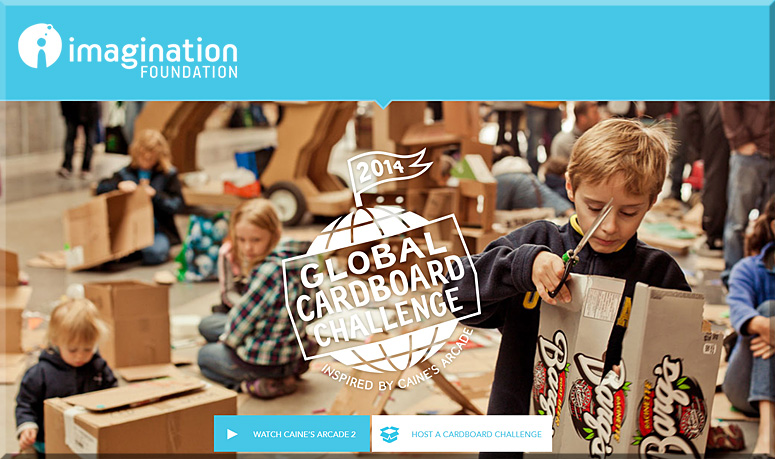Opening minds to critical knowledge on play, creativity and learning — from legofoundation.com
Cultures of Creativity (foundation research) — from legofoundation.com
Cultures develop when people find ways to play, make, and share. This report describes how human cultures can be characterised by their similarities rather than their differences, and emphasises the importance of recognising playfulness and creativity to develop societies prepared to accommodate the rapid changes associated with technology and globalisation.
Cultures of Creativity, nurturing creative mindsets (video) — from legofoundation.com
Creativity is one of the most important competencies of the 21st Century. Yet, the puzzling question is how to nurture it? Children are creative from the day they are born and the film describes how to support creativity across cultures. The content is based on the report, Cultures of Creativity, published by the LEGO Foundation, 2013. Authors: David Gauntlett and Bo Stjerne Thomsen and 20 leading international experts on play, learning and creativity.com
Inviting the world to play –– from cardboardchallenge.com/
This fall, the Imagination Foundation invites the world to participate in our 3rd Annual Global Cardboard Challenge.
.
With a shout out to Mitch Resnick for posting
these resources on Twitter. Mitch is going to be talking about
“Sowing the Seeds for a More Creative Society” this Wednesday w/ Adobe.
From Calvin College-based staff and faculty:
- A whack on the side of the head : how to unlock your mind for innovation / Roger von Oech ; foreword by Nolan Bushnell ; illustrated by George Willett.
- Sparks of genius : the thirteen thinking tools of the world’s most creative people by Robert and Michele Root-Bernstein
- The learner-directed classroom : developing creative thinking skills through art — edited by Diane B. Jaquith, Nan E. Hathaway ; foreword by Patrick Fahey.
Jaquith, Diane B. (Added Author). Hathaway, Nan E. (Added Author). - Nurturing creativity in the classroom — edited by Ronald A. Beghetto, James C. Kaufman.
Beghetto, Ronald A., 1969- (Added Author). Kaufman, James C. (Added Author). - Improving Learning of Computational Thinking Using Creative Thinking Exercises in CS-1 Computer Science Courses — by Miller, Soh, Chiriacescu, et al. (2013)
- Fostering the Creative Development of Computer Science Students in Programming and Interaction Design — by Ferreira (2013)
- Integrating Creativity into Computer Networks Course Teaching — by Hsiao, Liang, & Lin (2003)
- Pixar Cofounder Ed Catmull on failure and why fostering a fearless culture is the key to groundbreaking creative work – from brainpickings.org by Maria Popova
Why the greatest enemy of creative success is the attempt to fortify against failure.
Excerpt:
We need to think about failure differently. I’m not the first to say that failure, when approached properly, can be an opportunity for growth. But the way most people interpret this assertion is that mistakes are a necessary evil. Mistakes aren’t a necessary evil. They aren’t evil at all. They are an inevitable consequence of doing something new (and, as such, should be seen as valuable; without them, we’d have no originality). And yet, even as I say that embracing failure is an important part of learning, I also acknowledge that acknowledging this truth is not enough. That’s because failure is painful, and our feelings about this pain tend to screw up our understanding of its worth. To disentangle the good and the bad parts of failure, we have to recognize both the reality of the pain and the benefit of the resulting growth. - How Disney’s Imagineers keep the magic ideas coming – from fastcompany.com by Rebecca Greenfield
Peter Rummell, the former chairman of Disney’s Imagineers, shares inside stories and secrets about how Disney’s teams work together to make magic happen again and again. - 10 ways to teach innovation — from blogs.kqed.org/mindshift by Thom Markham
Excerpt:
One overriding challenge is now coming to the fore in public consciousness: We need to reinvent just about everything. Whether scientific advances, technology breakthroughs, new political and economic structures, environmental solutions, or an updated code of ethics for 21st century life, everything is in flux—and everything demands innovative, out of the box thinking. The burden of reinvention, of course, falls on today’s generation of students. So it follows that education should focus on fostering innovation by putting curiosity, critical thinking, deep understanding, the rules and tools of inquiry, and creative brainstorming at the center of the curriculum. This is hardly the case, as we know. In fact, innovation and the current classroom model most often operate as antagonists. The system is evolving, but not quickly enough to get young people ready for the new world. But there are a number of ways that teachers can bypass the system and offer students the tools and experiences that spur an innovative mindset. Here are ten ideas… - How schools kill creativity — from TED.com by Sir Ken Robinson
- Barriers to Creativity in Education: Educators and Parents Grade the System [Adobe]
- Perhaps some ideas at a Do It Yourself (DIY) type of site could be relevant, such as org/skills/innovator
- Perhaps have the students use digital storytelling in an assignment, see:
- Digital Storytelling Helps Students Practice Essential Skills – from elearningindustry.com by Tiziana Saponaro
- 5 reasons why you should be using storytelling in training – from dashe.com by Ben Nesvig
Excerpt:
Storytelling has been a popular tool for learning since the dawn of civilization, but thanks to technology bringing new mediums for storytelling, it has been on the rise in training in the workplace. Despite the fact that storytelling is a powerful vehicle for teaching, some still prefer to do a “data dump” because it’s easier than constructing a narrative, though not more effective. Below I provide 5 reasons why storytelling should be used more frequently in the workplace. - Mesmerizing fairy tale on the power of transmedia storytelling – from frametales.com by DRAFTFCB Madrid and posted by Filip Coertjens
- Expanding learning opportunities with transmedia practices – Parts 1-6 [Laura Fleming]
- erikjohanssonphoto.com










